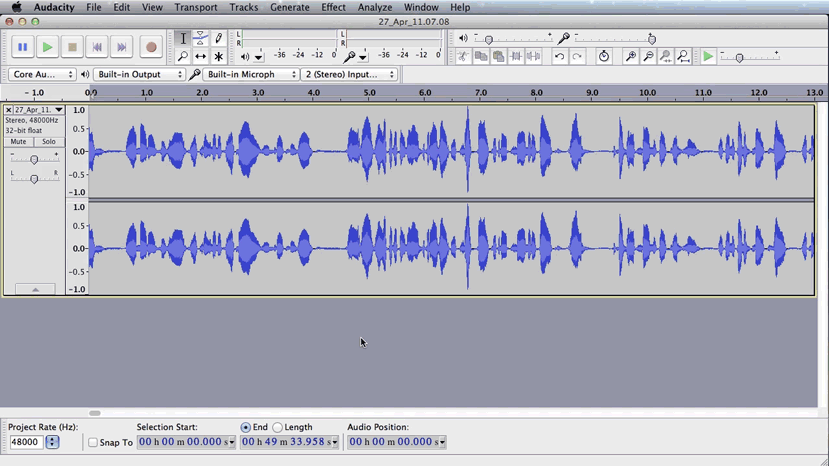

However, if you’re working on a lab computer: Save often by going to “File” in the menu and clicking “Save Project.” If you’re working on your own computer then that’s it.

Fade in and out – Use the Envelope tool to place “control points” on a track to change the volume at the control points.Shift audio tracks – Use the Time Shift tool to drag audio tracks left and right or even up and down tracks to combine tracks.

Zoom in and out – Use the magnifying glasses in the menu to zoom in and out of audio tracks.Locate the audio file and click the button.īelow are a number of commonly used tools.Hover over “Import” and select “Audio.”.Click the stop button from the toolbar to end recording.Īudacity supports importing a number of popular file types such as WAV and MP3.Allow the recording to run quietly a few seconds before speaking to ensure the beginning of the recording is complete. Click the record button from the toolbar to begin recording.You can also adjust the distance the mic is from the audio source to increase the input. The mic input can be adjusted by moving the slider in the toolbar.It will be named either Microphone (USB audio device) or AK5370. Select the USB mic from the microphone drop down menu.Using a USB mic to record is recommended because the quality will be better even though it’s possible to use a built-in microphone. This can be helpful if you want to record something in a more private setting (e.g., in a library study room).īasic recording and editing techniques in Audacity Recording directly in Audacity
#Audacity for mac two microphones Pc
#Audacity for mac two microphones download
The instructions for installing are located on the download site. Audacity is an open-source audio editing tool freely available for Mac, PC, and Linux operating systems.


 0 kommentar(er)
0 kommentar(er)
